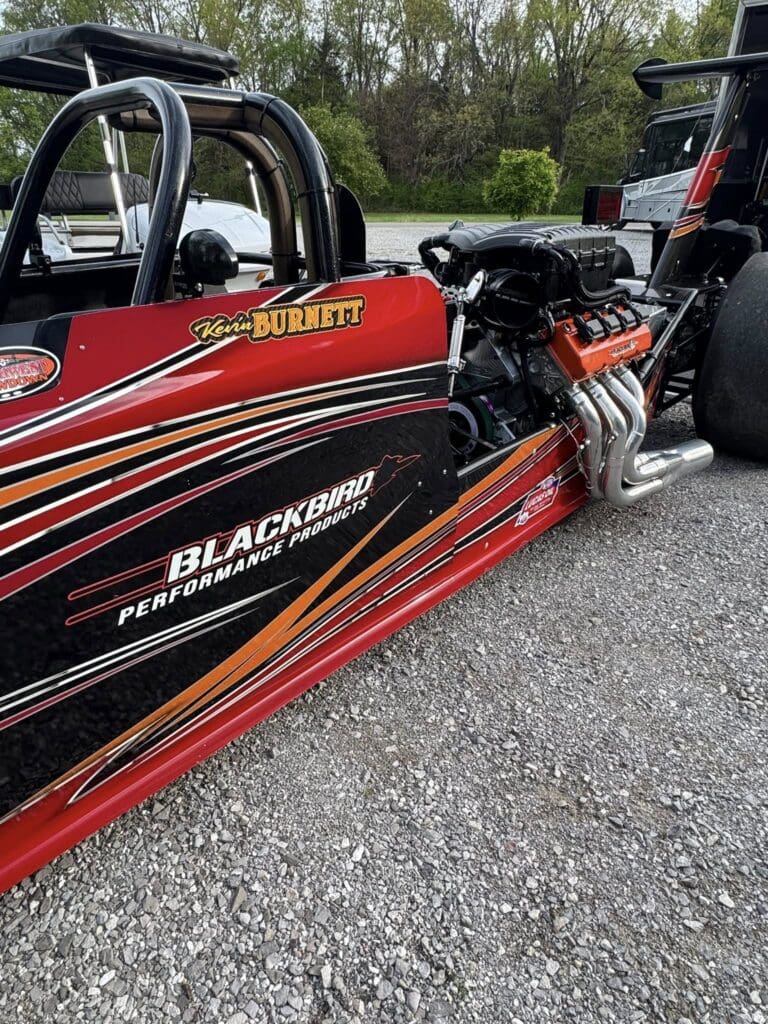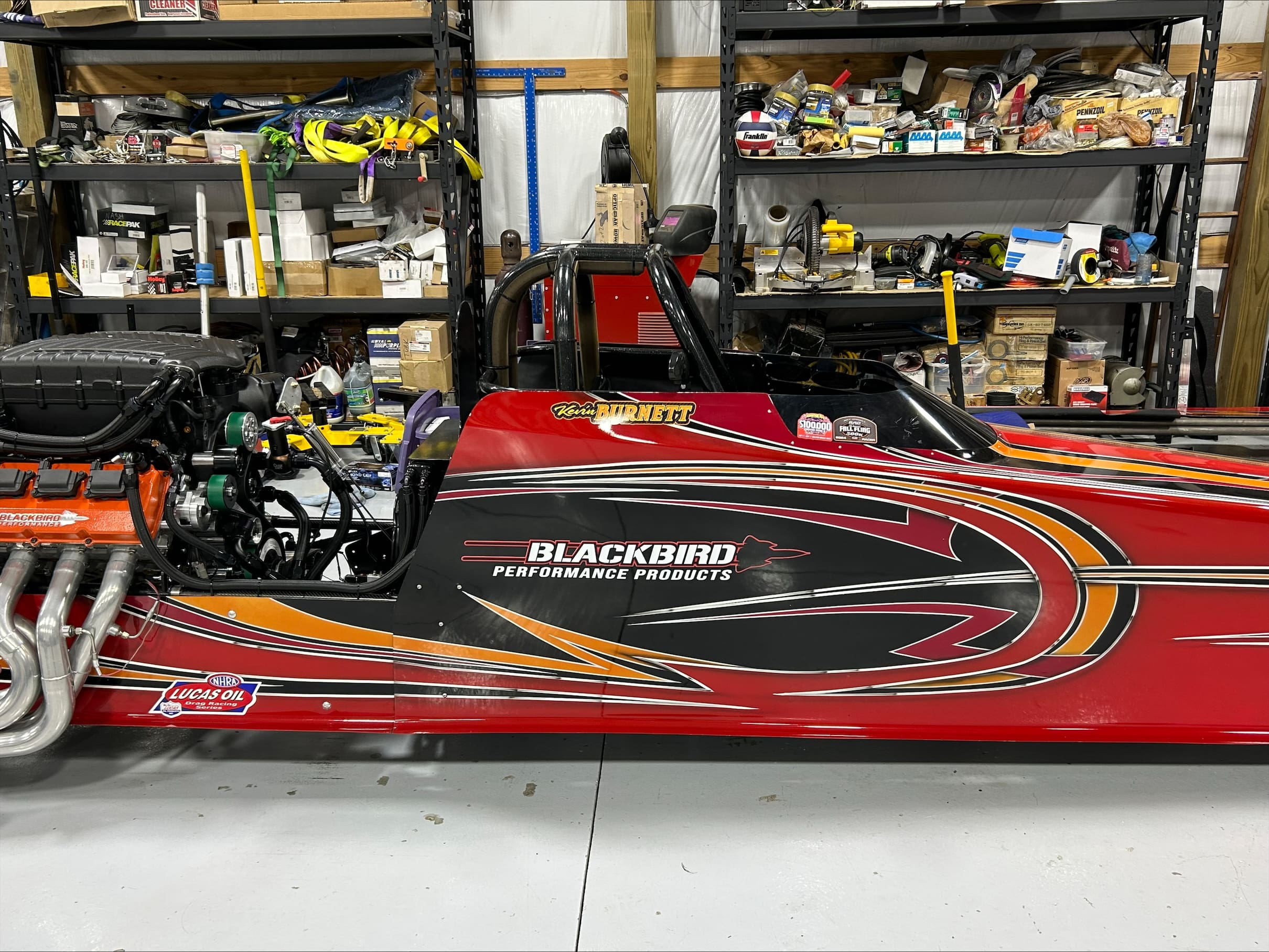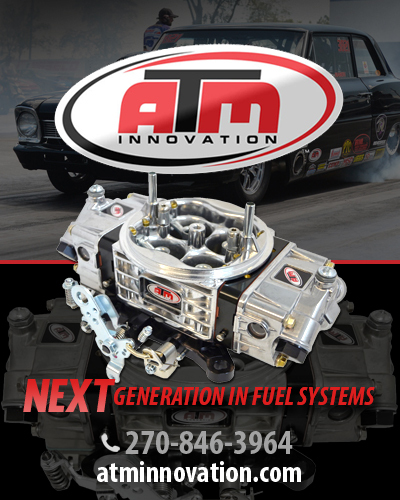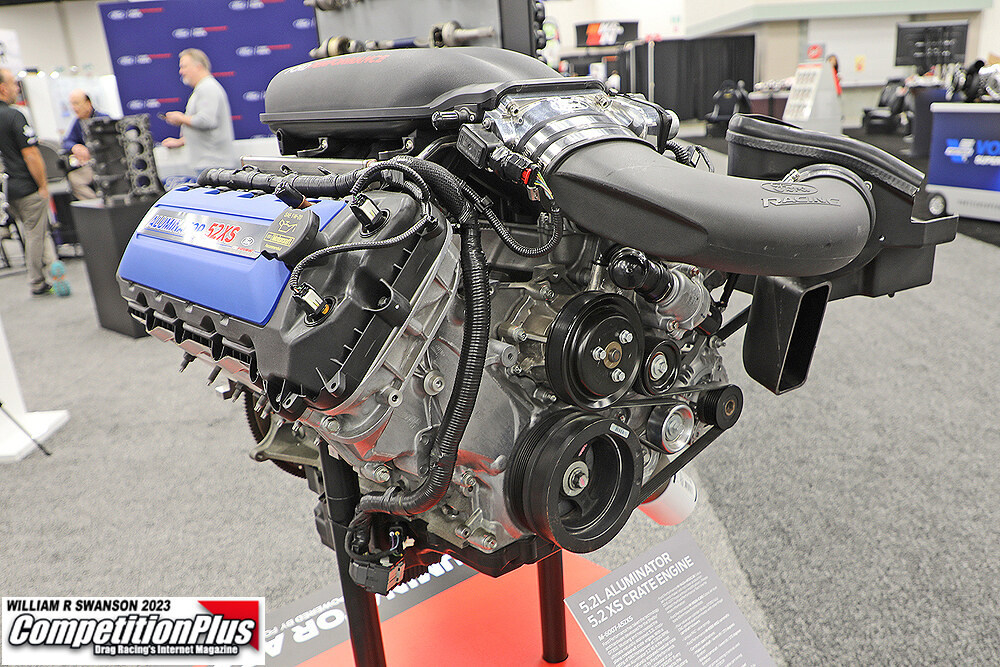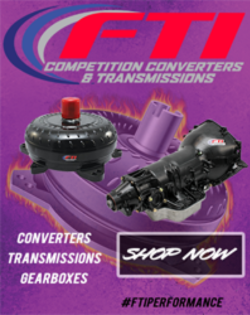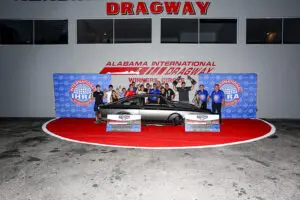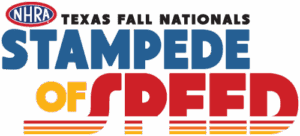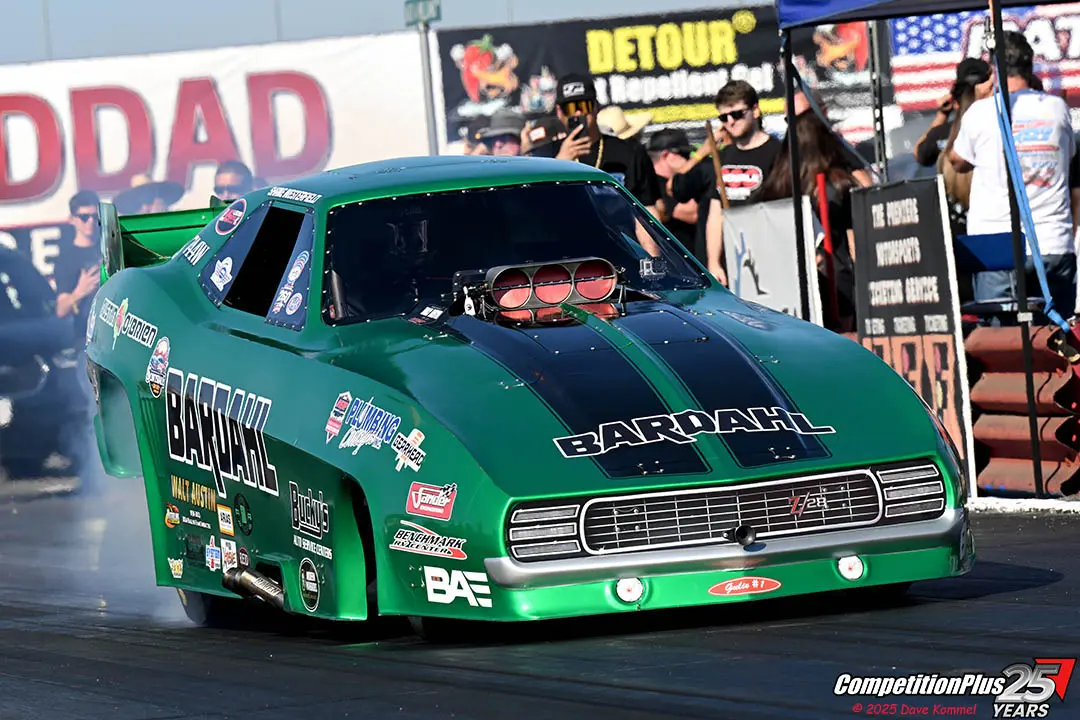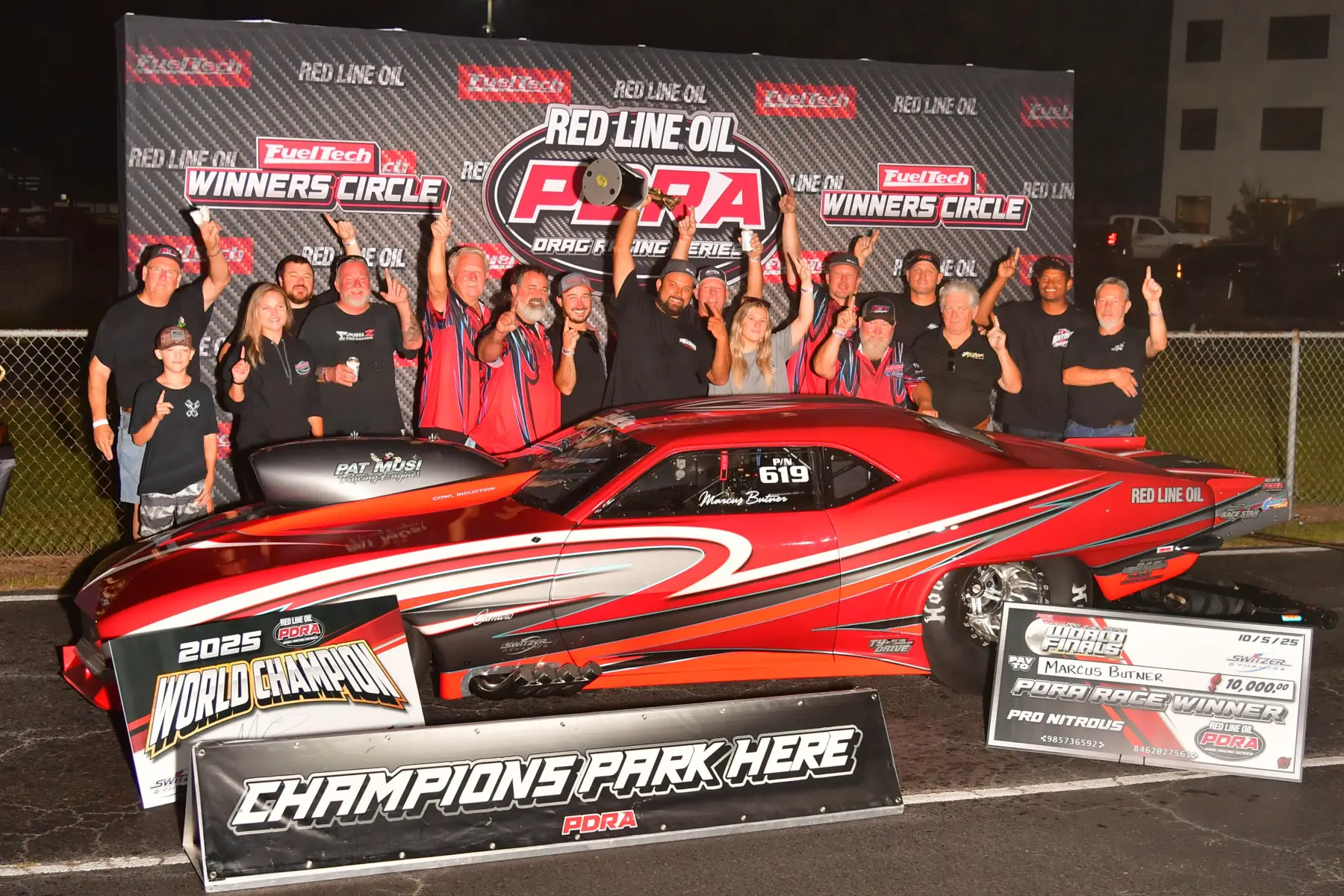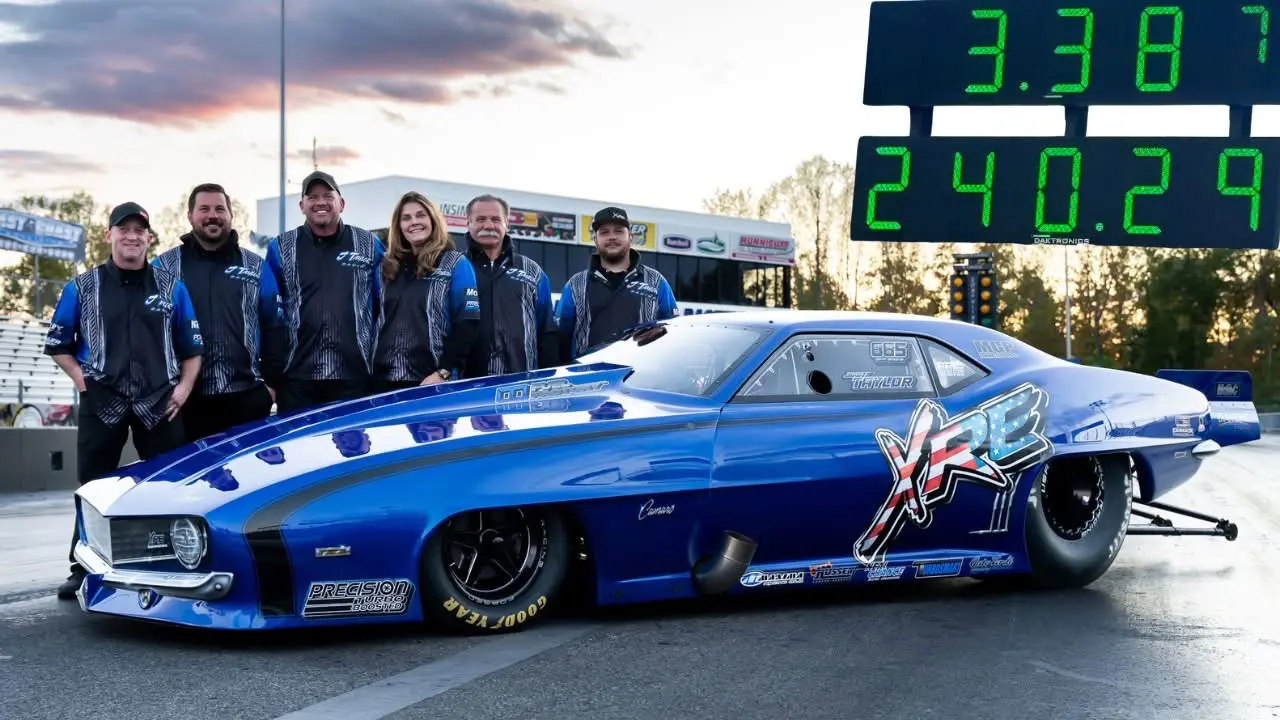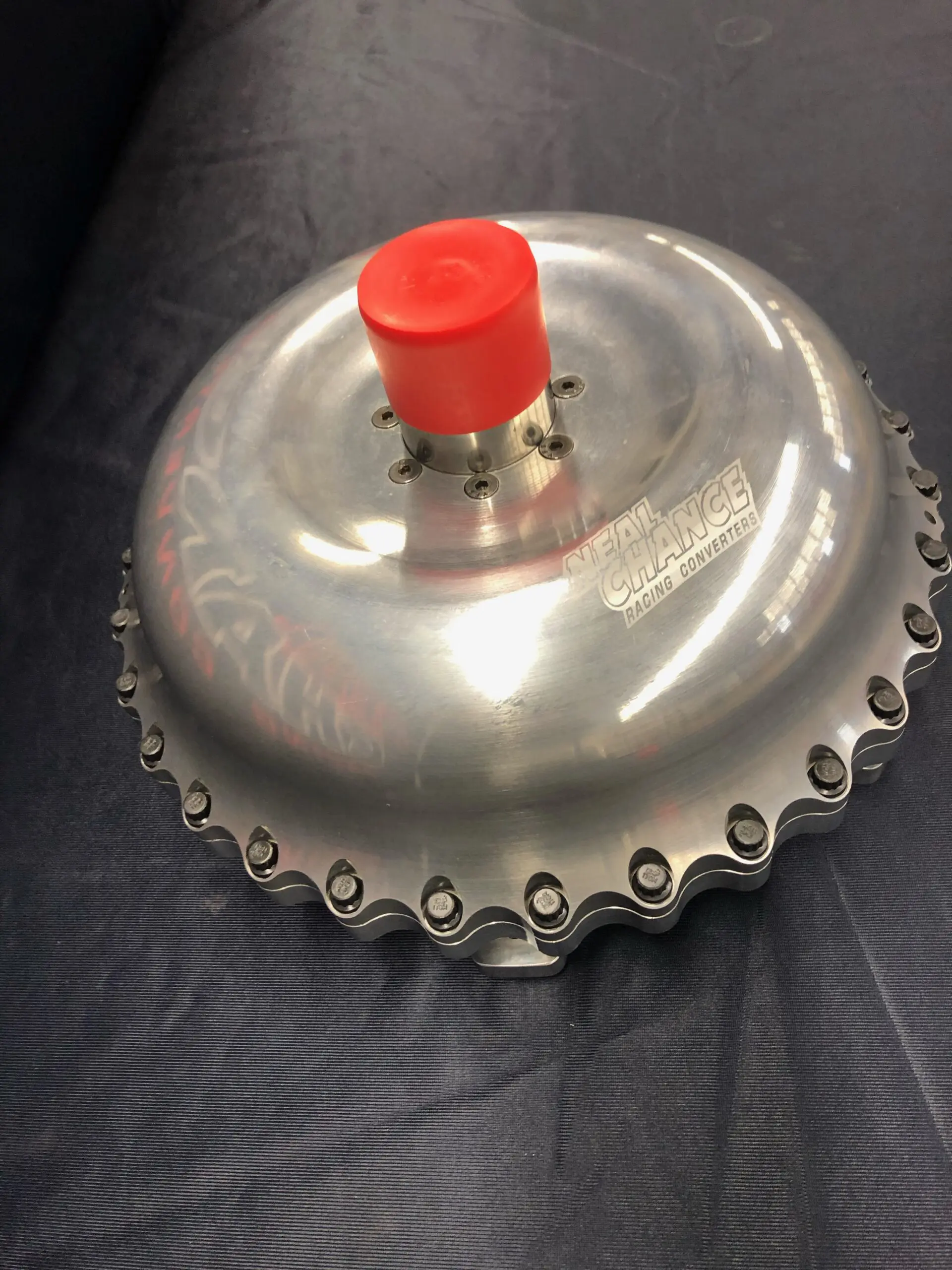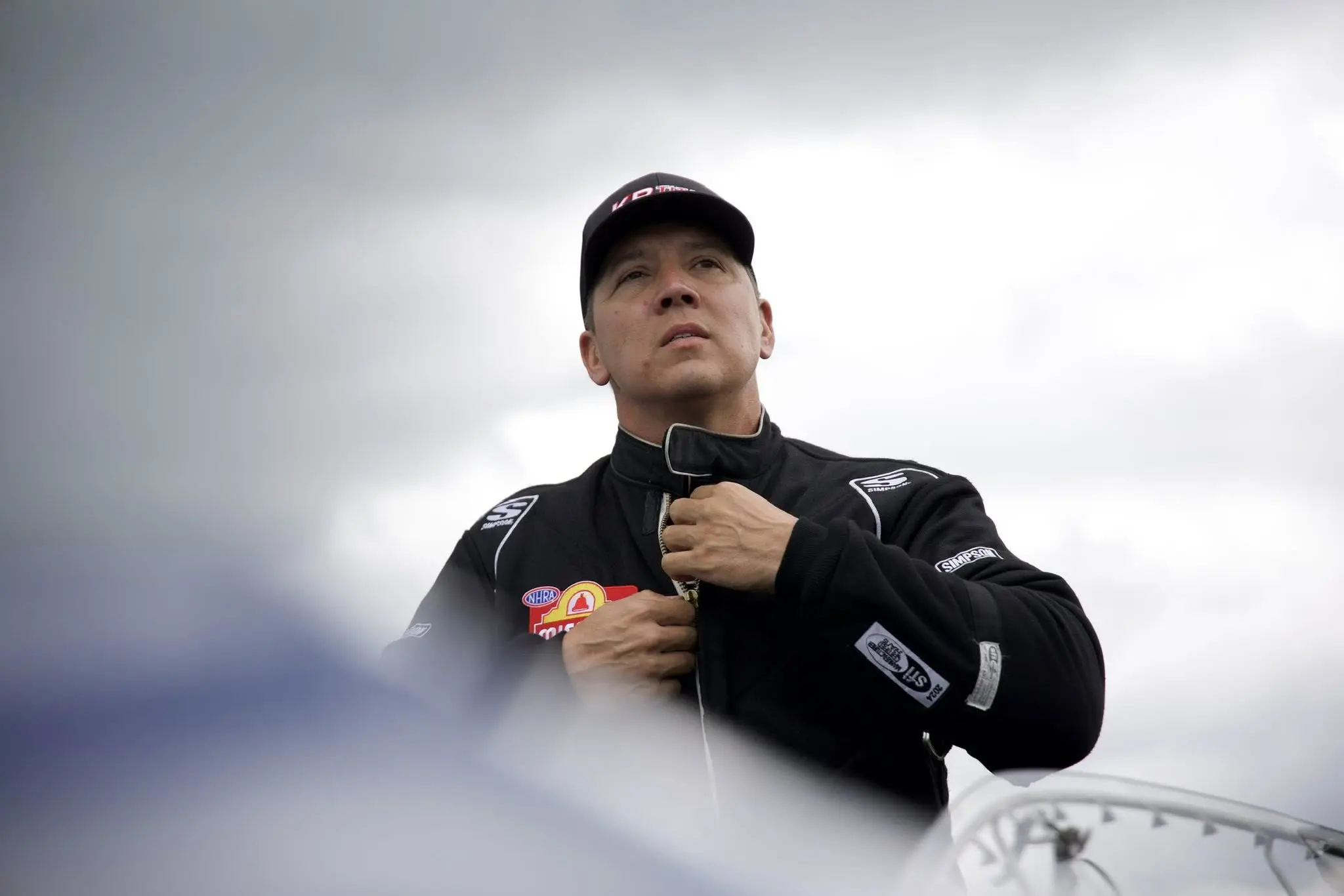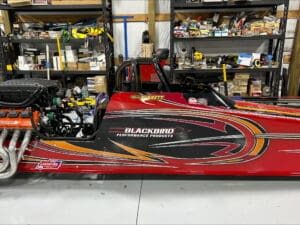
In the last edition of Project 1675, we introduced you to Blackbird Performance’s Geoff Turk and Top Dragster racer Kevin Burnett, who set a goal to prove that a relatively low-cost engine platform, utilizing the Gen-3 Hemi platform, with parts readily available, can be competitive in the high-demand arena of fast-bracket racing. It’s a GM-dominated arena, with power adders that they must overcome.
In late April, the Burnett Racing team with Blackbird Performance headed to Bowling Green, Kentucky’s Beech Bend Raceway, to put Project 1675 through its initial paces.
Turk said the session had its pluses and minuses, something to be expected the first time.
“We got out there… first pass down the track and we had a little bit of a mishap, we had a fuse blow on the fuel pump,” Turk explained. We progressively kept stepping it up in the subsequent several passes, getting the rust knocked off him and seeing how the whole combination worked.”
The first runs were a progressive checklist of the various parts and their performance delivery from the oil pan to the intercooler and everything in between.
“We worked into the evening on that first day after the track testing shut down, came up with some theories, came back out the next morning, applied some of those theories,” Turk said. “We learned some more, straightened it out, and ran it like it should.”


On the first full pass, Project 1675 laid down a 6.78 at 177 miles per hour using a Blackbird Performance 426-inch engine with a street-style Whipple supercharger, similar to what the Drag Paks run. The first run was not a full pass, but it still yielded enough data to ensure they were on the right track.
Knowing the engine could put the dragster in the competitive arena regarding performance, the next run was intended to create a foundation where the car could develop repeatability.
While the Top Dragster racers are focused on going quicker and faster, they know they’re running a bracket race,” Turk said. “It’s sometimes a challenge to get that balance between; we want it to be consistent, we want it to go down the track every time, it doesn’t really have to be that fast to get in these fields. Even that first pass he made would have put him mid-pack at most national events, except the U.S. Nationals, but every other national event, all his division of events, and PDRA in the Top Dragster 48 field.”
The question facing Turk and Burnett asks, how much quicker do they want to make the combination, especially if they hope to get in an Indy field. The heads-up, no breakout racer in Turk from his Factory X and Factory Stock Showdown days inspires him to go faster. Burnett wants the same, too, without sacrificing consistency.
The two are working on achieving both, and believe there can be a pathway to this objective while fixing some of the issues encountered on the 6.7-second passes.

RELATED STORY – Geoff Turk is very goal-oriented, whether on the strip or off. Success is his primary goal, with failure not being an option.
Turk, using his Blackbird Performance brand, is determined to prove there’s a relatively low-cost engine platform, utilizing the Gen-3 Hemi platform, with parts readily available, that can be competitive in the high-demand arena of fast-bracket racing, primarily Top Dragster at this moment.
Understanding the category, which limits competitors to a 6.00 (3.60, eighth-mile) elapsed time, Turk understands the GM-dominated arena, with power adders, will be a formidable challenge.
READ – PROJECT 1675: BUILDING AN AFFORDABLE – BUT FAST – TOP DRAGSTER COMBINATION – PART 1
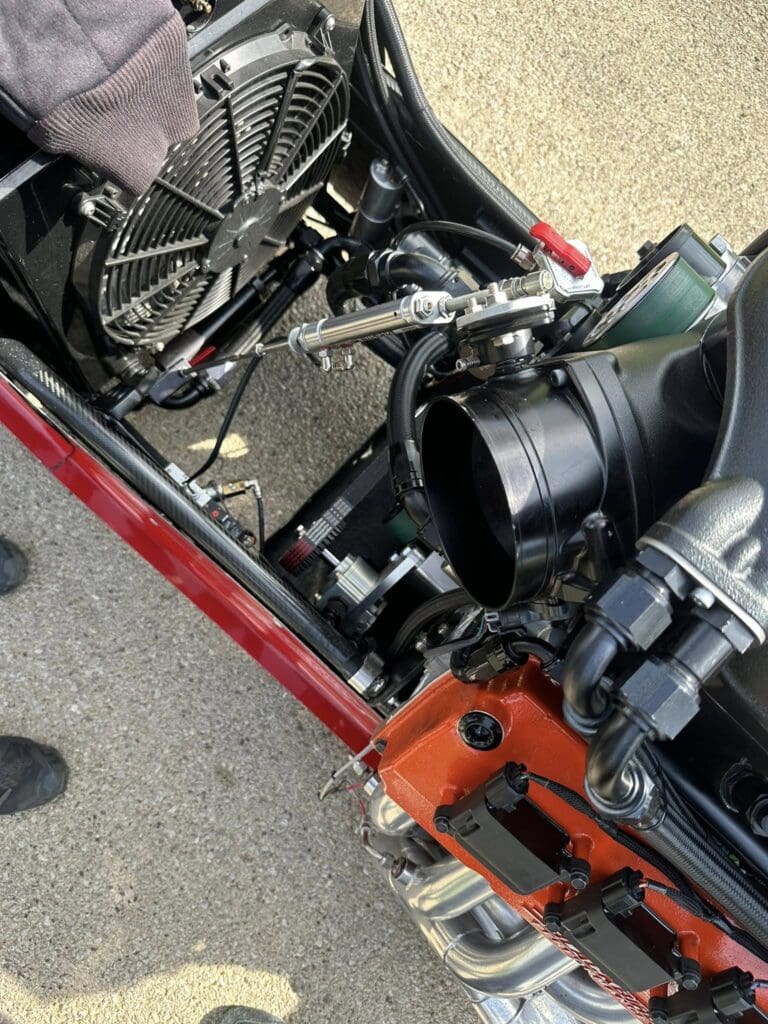
“The first thing is the torque converter match was kind of a mismatch,” Turk explained. “The second thing is that it had no air and let the throttle bodies literally sit behind the cockpit in that big turbulent airspace behind the cockpit and behind the radiator, so you can see in the engine data that it’s just not getting the air it needs.
“In between correcting the air scoop and I’m trying to improve on that and matching the torque converter,” Turk explained.
Turk believes once the small details are fine-tuned, Burnett’s dragster could pull in performances ranging from 6.30 to 6.50, even in the summer air. That should put Burnett’s dragster in the mix against other participants running engines that displace around 540 cubic inches, centrifugally supercharged and pushing as much as 2,500 horsepower.
Turk believes the car should have run a 6.45 during the test session, but remains positive as he and Burnett get the new engine combination dialed in.
“This is an engine that’s down 120 cubic inches from that uses relatively stock parts for most of it,” Turk added. “And a street supercharger that literally you could bolt on a car that you drive on the street. So given that powerplant making 1675 horsepower about where it should be, it should have on our test session in the air that we had, which wasn’t great air at Beech Bend, it should have gone 6.45.
“If it went 6.70 on the first pass, and it didn’t have an air inlet on it, and got the wrong torque converter. It’s pretty clear we’ll get it to where we want, even in 3,000-foot air.”

The huge positive Turk and Burnett walked away from the test knowing this engine combination is not eating up parts to run quickly, and doing so with a pricetag for a complete engine and power adder well under $60,000.
“Already, the runs we’ve made are the top three performances for the Gen 3 Hemi platform,” Turk said. “And, we have a lot more left. It should run consistently from 6.30 to 6.50 if Kevin wants to lean on it and take it there.
“The bottom line is that we’re pretty happy with it. We’ll see if we can tweak it in a little bit.”
After the short test session, Burnett immediately headed off to the NHRA Division 5 doubleheader, which proved to be a challenging experience with rain, wind, and tricky track conditions. Nonetheless, progress was made in a series of quickening and becoming more consistent runs. After qualifying with a 6.64, 205.47 in the first race, he lost in round one, then safely qualified in race two on a tricky surface, where he dialed a 6.56 in round one. There, he had a very close -0.005 reaction time, but unfortunately, the worst red light of the pair. He had a 60-foot right at the low 1.0 target, his best eighth-mile elapsed time and speed by a bit, stayed with it to the 1000-foot mark, and lifted going through on a 6.66 at only 176. On a full pull, the data says it was on a pretty good one and close to his 6.56 dial, likely at 208-plus miles per hour.
In the next installment of Project 1675, on to the NHRA Route 66 Nationals event, and how the changes to get a lower elapsed time while heightening the repeatability factor are going.
